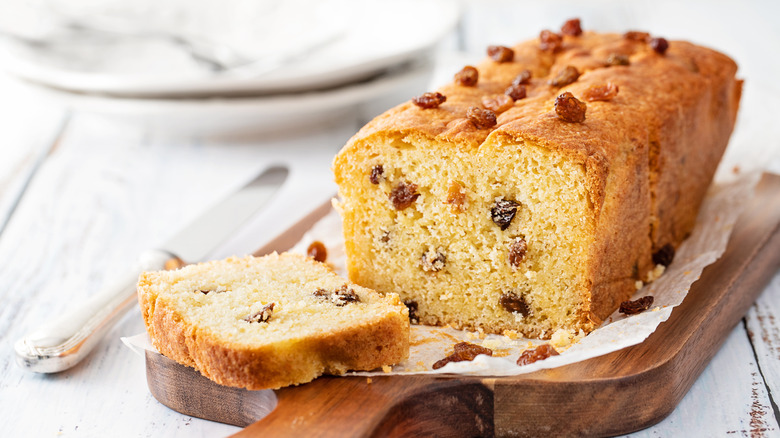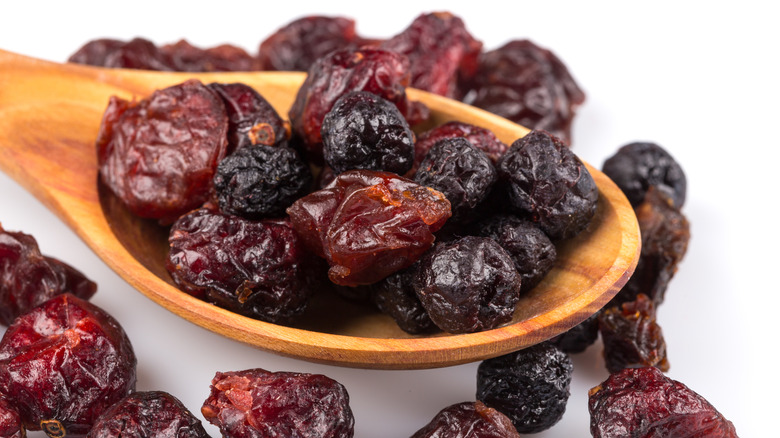How To Successfully Substitute Fresh Fruit For Dried In Baked Goods
Whether you're baking cakes, muffins, or cookies, adding some fruit is a delicious way to boost both the taste and texture. Using dried rather than fresh is not only convenient, but also means you can use fruits that might not be in season — whether you prefer cranberries, cherries, prunes, figs, apricots, peaches, apples, or blueberries. But what do you need to know before you make the switch? Food Republic consulted Sofia Schlieben, corporate pastry chef at JF Restaurants, to get some pro tips.
"It depends on the baked good," said Schlieben. "One technique I like is creating a dried fruit puree by rehydrating dried fruit in a 1:4 sugar-to-water syrup, then blending it until smooth. I'll use this puree in my favorite banana bread recipe as a substitute for bananas — perfect for when you don't have ripe bananas on hand!" If you want to incorporate even more flavor as well as texture, raisins or dried berries are the best dried fruits to spruce up banana bread.
Another easy method for making a puree with dried fruit involves gently poaching the dried fruit in water and sugar in a pan over a low heat for around half an hour until the sugar melts. This will also give the fruit a lovely soft texture before you blend it. Consider adding additional ingredients to boost the flavor, too, such as orange zest with dried apricots, or spices like ginger or cardamom with dried mango.
More tips for baking with dried fruits
Rather than adding dried fruit straight from the packet, it's a good idea to rehydrate it first to soften it. "For recipes that don't already include fruit, I simply add well-strained, gently hydrated dried fruit directly to the batter," said pastry chef Sofia Schlieben. "This prevents the fruit from becoming too chewy while maintaining its flavor and texture." Rehydrating is a simple step that makes raisins more delicious as well as other fruits, and you don't just have to use water — whiskey is a game-changer for rehydrating dried fruit and imparts a lovely rich flavor.
Dried fruits are often more intensely flavored than fresh, and the sweetness, more concentrated. When switching fresh fruit for dried in recipes, you need to adjust the quantity, and the amount will depend on the fruit. With blueberries, use a ¼ cup of dried instead of a cup of fresh; with sharper cranberries, try ½ cup. If your recipe doesn't feature fruit, use between ½ cup and a full cup of dried fruit for each cup of flour.
If you're tempted to alter the amount of sugar in your recipe to compensate for the sweet dried fruit, however, Schlieben advised against it. "I don't typically reduce it," she said. "Sugar plays a critical role in the structure and chemistry of baked goods, and most recipes are designed with specific sugar ratios for a reason. Unless the recipe is highly adaptable, it's best to leave the sugar amount as written."


